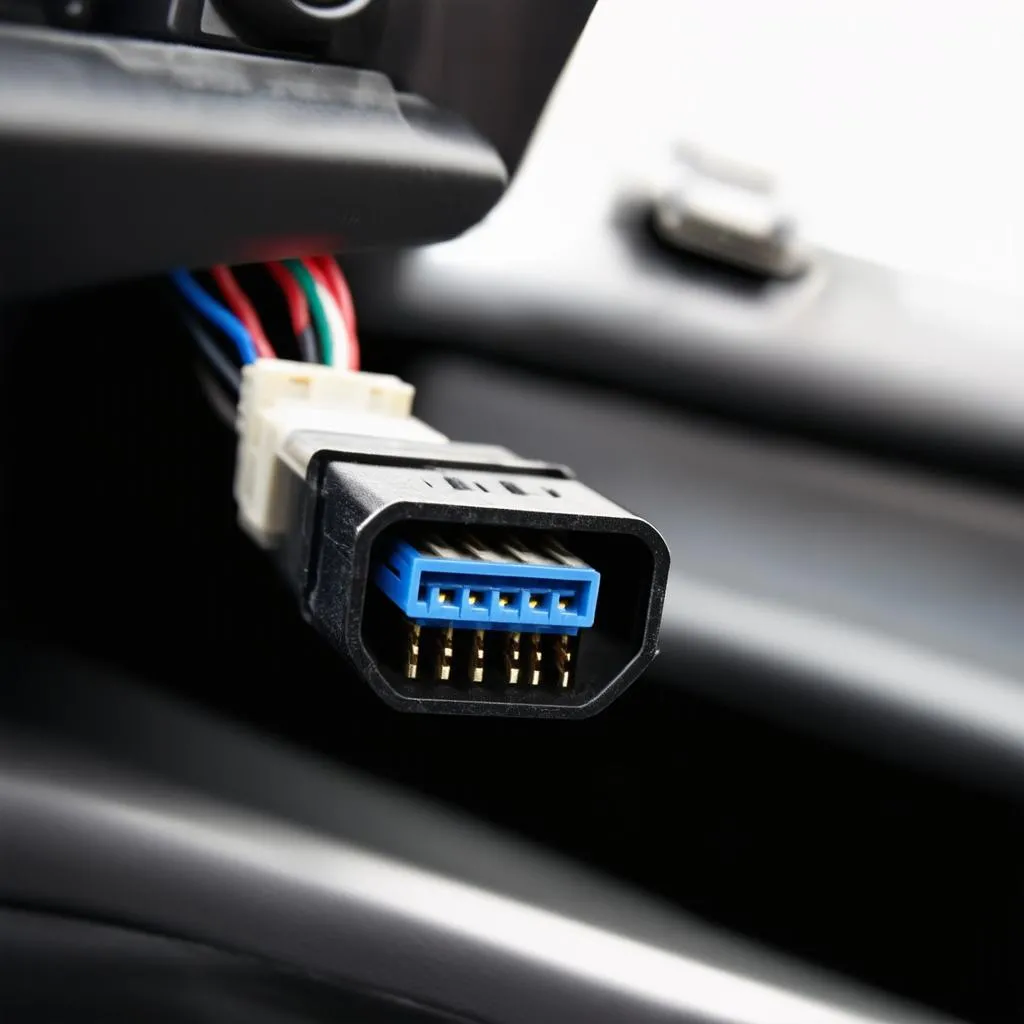Imagine this: you’re driving down the Pacific Coast Highway, California, top down, wind in your hair, when suddenly, your check engine light decides to join the party. Annoying, right? This little light is your car’s way of saying, “Hey, something’s up!” But how do you figure out what’s wrong? This is where the magic of On-Board Diagnostics (OBD) comes in, specifically OBD2.
Understanding the Question: What’s the Deal with OBD and OBD2?
Before we dive into the differences, let’s understand what these terms even mean.
- OBD, or On-Board Diagnostics, is like your car’s internal computer system. It monitors various components and systems, looking for malfunctions.
- OBD2 is a standardized version of OBD introduced in 1996 in the US. Think of it as a universal language that all car manufacturers agreed upon. This standardization made diagnostics significantly easier for mechanics and car owners alike.
From a mechanic’s perspective, the evolution from OBD to OBD2 was revolutionary. “Before OBD2, we were dealing with a multitude of connectors and protocols, each manufacturer doing their own thing,” says John Miller, a seasoned mechanic in Chicago. “OBD2 streamlined the process, allowing us to quickly identify and troubleshoot issues across different car makes and models.”
Economically speaking, OBD2 also leveled the playing field. Independent repair shops could now access the same diagnostic information as dealerships, fostering competition and potentially leading to more affordable repairs for car owners.
OBD vs OBD2: Spotting the Differences
While both systems aim to diagnose car problems, there are some key differences:
- Standardization: OBD systems varied greatly between car manufacturers. OBD2 brought uniformity, using the same 16-pin connector and standardized diagnostic trouble codes (DTCs).
- Data Access: OBD offered limited data access. OBD2 provides a wider range of information, including real-time data streams, freeze-frame data (snapshot of the vehicle when the fault occurred), and emission-related data.
- Capabilities: OBD2 introduced new monitoring capabilities, including enhanced emissions monitoring, misfire detection, and more comprehensive system coverage.
Why Should I Care?
Knowing the difference between OBD and OBD2 is crucial for several reasons:
- Choosing the Right Diagnostic Tool: If you’re looking to buy an OBD2 scanner like the Autel AutoLink AL539 (check out our comparison of the Autel AL539 vs. AL539B here: [link to https://diagxcar.com/autel-autolink-al539-vs-al539b/]), you need to ensure it’s compatible with your car’s system. Cars manufactured before 1996 might require different tools.
- Understanding Diagnostic Codes: When your check engine light pops up, an OBD2 scanner can help you retrieve the diagnostic trouble code (DTC). Understanding these codes can give you a better grasp of the potential issue.
Common Questions about OBD vs OBD2:
1. “My car was manufactured in 1995. Does it have OBD2?”
While OBD2 became mandatory in the US in 1996, some manufacturers started implementing it earlier. Check your owner’s manual or look for the 16-pin diagnostic connector (usually located under the driver’s side dashboard) to confirm.
2. “Can I use any OBD2 scanner on my car?”
While all OBD2 scanners use the same connector, they offer different functionality. Some might only read and clear basic codes, while others, like the Autel AL619 or Foxwell NT301 (read our comparison here: [link to https://diagxcar.com/autel-al619-vs-foxwell-nt301-obd2-scanner/]), offer advanced features like live data streaming.
3. “What are the limitations of OBD2?”
While OBD2 is a powerful diagnostic tool, it doesn’t provide a complete picture of your car’s health. It’s still essential to have regular inspections by a qualified mechanic.
Beyond the Basics: Exploring Deeper Questions
Beyond the fundamental differences, there’s a whole world of OBD2 knowledge to explore. For instance, did you know about the different communication protocols within OBD2, like CAN bus or J1850? Or how about the increasing complexity of vehicle networks and the emergence of diagnostics over IP (DoIP)? These topics delve deeper into the intricacies of vehicle communication and diagnostics.
For car enthusiasts and DIY mechanics, understanding these advanced concepts can be incredibly beneficial. It allows for a more in-depth analysis of vehicle data, potentially enabling you to diagnose and even fix more complex issues yourself.
Need Help Navigating the World of Car Diagnostics?
We get it, car diagnostics can feel like a foreign language. That’s where we come in! At Diag XCar, we’re passionate about demystifying the world of automotive technology. We offer a range of resources, including in-depth reviews and comparisons of popular diagnostic tools like the ones from Autel, BlueDriver (check out our comparison here: [link to https://diagxcar.com/blue-driver-obd-2-autel/]), and Foxwell (explore our Autel vs. Foxwell comparison here: [link to https://diagxcar.com/autel-obd2-vs-foxwell-obd2/]).
Need personalized assistance? Feel free to reach out to our team of automotive experts via Whatsapp at +84767531508. We’re always happy to help with any questions or concerns you might have.
 OBD2 Connector
OBD2 Connector
 Mechanic Using OBD2 Scanner
Mechanic Using OBD2 Scanner
Drive with Confidence, Armed with Knowledge
Understanding your car’s diagnostic system empowers you to take control of your vehicle’s health. By recognizing the differences between OBD and OBD2, knowing how to use a diagnostic scanner, and being aware of the resources available, you can confidently tackle those pesky check engine lights and keep your car running smoothly for miles to come. Happy driving!